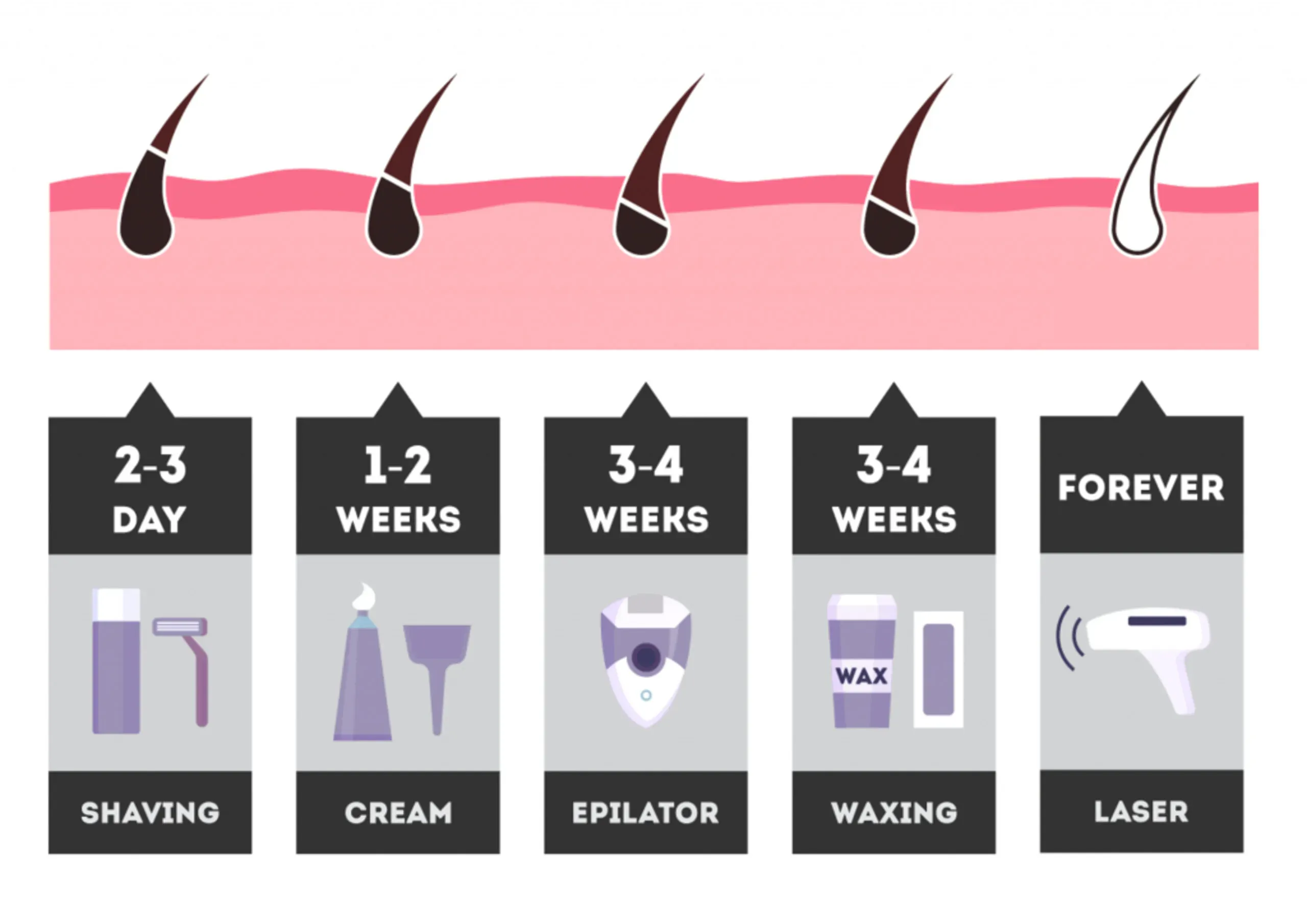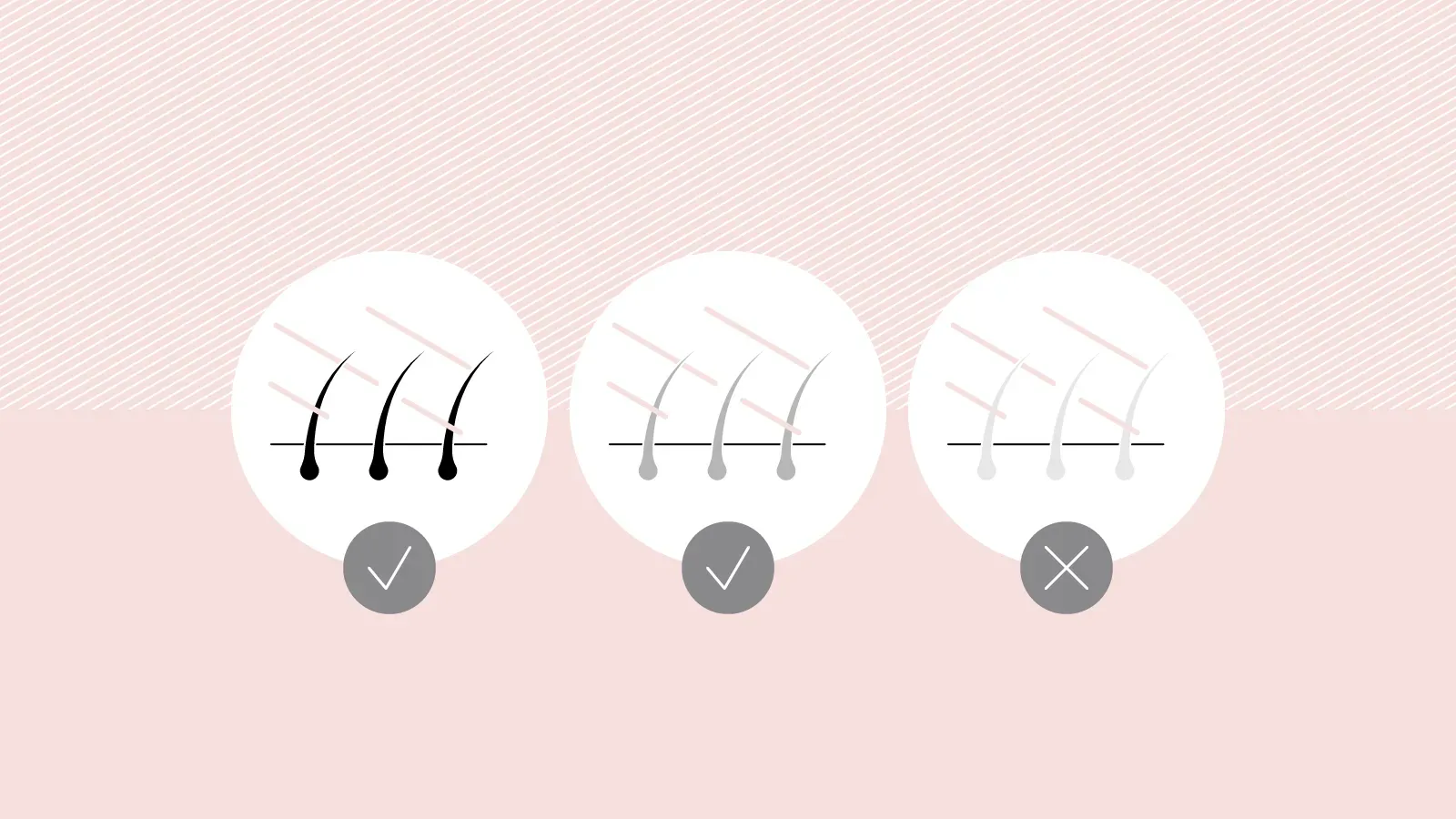Table of Contents
Tired of the endless cycle of shaving, waxing, or plucking? You're not alone. Dealing with unwanted hair can feel like a full-time job, a constant battle against stubble and ingrown horrors. Laser hair removal pops up as the promised land of smooth skin, a long-term escape from the tyranny of razors and hot wax.
Understanding Melanin and Laser Hair Removal

Understanding Melanin and Laser Hair Removal
What Melanin Does in Your Hair
Alright, let's talk about melanin. Think of it as the pigment that gives your hair and skin their color. It's the stuff that makes brown hair brown, black hair black, and gives you that tan (or sunburn, depending on your luck). In the world of laser hair removal, melanin is the key player. The laser device emits a specific wavelength of light, and that light is designed to be absorbed by the melanin in your hair follicle.
When the laser light hits the melanin, it converts that light energy into heat. This heat then travels down the hair shaft to the follicle, essentially damaging it. Damaged follicles struggle to grow hair back, leading to the long-term reduction we're all chasing. It's a targeted attack, relying on the color difference between your hair and skin.
Why Dark Hair is the Laser's Favorite Target
So, if the laser targets melanin, it makes sense that the more melanin a hair has, the better the target, right? Exactly. Dark, coarse hair is packed with melanin. This means it absorbs the laser's energy efficiently, generating enough heat to really zap that follicle into submission. This is why people with dark brown or black hair often see the most dramatic results, and often quicker results, than those with lighter hair colors.
Imagine trying to heat up a black asphalt road on a sunny day versus a white sidewalk. The black asphalt soaks up that heat like a sponge. Melanin-rich hair does the same with laser light. Lighter hair colors like blonde, red, or gray have significantly less melanin, sometimes almost none. This makes them poor targets for traditional lasers, as there isn't enough pigment to absorb the light and generate the necessary heat to damage the follicle effectively.
Here's a quick look at how melanin levels affect treatment:
- High Melanin (Dark Hair): Absorbs laser light strongly, heats follicle effectively, typically good results.
- Medium Melanin (Medium Brown Hair): Absorbs light well, results can be good but might require more sessions.
- Low Melanin (Blonde, Red Hair): Absorbs light poorly, less heat generated, traditional lasers often ineffective.
- Very Low Melanin (Gray/White Hair): Minimal to no melanin, traditional lasers generally do not work.
What is the Best Hair Type for Laser Removal?

What is the Best Hair Type for Laser Removal?
The Dream Team: Dark and Coarse Hair
Alright, let's cut to the chase. If laser hair removal were a casting call, the role of "Ideal Candidate Hair" would definitely go to dark, coarse hair. Think thick, stubborn strands that practically laugh at your razor. Why? Because these hairs are loaded with melanin, the pigment we just talked about. The more melanin, the better the target for the laser. The laser beam locks onto that dark pigment like a heat-seeking missile, travels down the hair shaft, and delivers a thermal punch straight to the follicle's gut. This heat is what damages the growth center, making it harder for hair to sprout back.
Dark, coarse hair absorbs that laser energy efficiently. It gets hot enough, fast enough, to really knock out the follicle's ability to regenerate effectively. This is why folks with this hair type often see significant reduction in fewer sessions compared to others. It's the most straightforward, most effective scenario for standard laser technology.
Why Lighter or Finer Hair is a Challenge
Now, on the flip side, what about hair that's not dark and coarse? This is where things get a bit trickier. Lighter hair colors – blonde, red, gray, white – contain much less melanin, sometimes none at all. Remember our heat-seeking missile analogy? Without enough melanin to act as a target, the laser light doesn't get absorbed effectively. It's like trying to hit a ghost with a laser pointer – it just passes right through. Not enough heat is generated to damage the follicle, meaning those hairs often remain stubbornly put.
Fine hair, even if it's dark, can also be less responsive. While it has melanin, there's less bulk for the heat to build up and transfer effectively down to the follicle. Think of trying to heat a thick metal rod versus a thin wire – the rod holds and transfers heat better. Fine hair is like the thin wire. It might take more sessions, and the results might not be as dramatic as with coarse hair. So, while laser hair removal is amazing, it's not a universal solution for every single hair color and texture out there.
- Ideal Hair Type: Dark and Coarse (High Melanin, Thick Diameter) - Best absorption, most effective treatment.
- Good Hair Type: Dark and Fine, or Medium Brown and Coarse - Still good melanin, but may require more sessions.
- Challenging Hair Type: Medium Brown and Fine, or Light Brown - Less melanin or less bulk, results can vary.
- Least Responsive Hair Types: Blonde, Red, Gray, White - Low to no melanin, traditional lasers are generally ineffective.
Skin Tone Matters Too: The Fitzpatrick Scale

Skin Tone Matters Too: The Fitzpatrick Scale
Understanding the Fitzpatrick Scale
Alright, so we’ve hammered home that dark, coarse hair is the laser's best buddy because of melanin. But here’s the twist: your skin also has melanin. This is where things get a bit more complicated, and where the Fitzpatrick Scale comes into play. This isn't some ancient mystic chart; it's a scientific classification system that dermatologists and laser technicians use to categorize skin types based on how they react to UV light – basically, how easily you tan or burn. It ranges from Type I (very pale, always burns, never tans) to Type VI (very dark, never burns, always tans). Why is this important for laser hair removal? Because the laser light, while targeting hair melanin, can also be absorbed by the melanin in your skin.
Beyond the Ideal: Laser Options for Different Hair & Skin Combinations

Beyond the Ideal: Laser Options for Different Hair & Skin Combinations
Adapting Technology for More Combinations
so we've established that dark hair on light skin is the classic "best hair type for laser removal" scenario. But let's be real, the world isn't one-size-fits-all when it comes to hair and skin. Good news: technology hasn't stood still while we've been battling stubble. Laser systems have become way more sophisticated. For folks with darker skin tones (remember those higher numbers on the Fitzpatrick Scale?), the challenge is that the laser light can be absorbed by the skin's melanin just as much as the hair's. This ramps up the risk of burns, discoloration, or scarring. Enter lasers like the Nd:YAG. This bad boy uses a longer wavelength that bypasses the upper layers of the skin more effectively, targeting the deeper hair follicle with less risk to the surrounding skin tissue. It's slower going than, say, an Alexandrite laser which is great for lighter skin, and you might need more sessions, but it makes laser hair removal a viable, safer option for a much wider range of complexions than ever before. While truly white, gray, or very light blonde/red hair still remains a tough nut to crack for *any* laser because of the near absence of melanin, advancements continue to push the boundaries.
So, while the classic dark hair/light skin combo is still often the most straightforward path to smooth sailing, don't despair if you don't fit that mold. Modern clinics, like those you might find listed on hairawaybylaser.com, utilize different laser types designed to handle various hair and skin scenarios. It's less about finding *the* single best hair type for laser removal and more about finding the *right* laser technology for *your* specific hair and skin combination.
Your Laser Hair Removal Path: Knowing What to Expect
So, while the dream scenario for laser hair removal often involves dark, thick hair against fair skin, the reality is a bit more nuanced. Melanin is the target, plain and simple. More pigment in the hair shaft means the laser has something substantial to heat up and disable the follicle. Less pigment, like in blonde, red, or gray hair, makes the laser's job significantly harder, sometimes impossible.
But technology isn't static. Newer lasers have broadened the possibilities, cautiously treating darker skin tones and even some lighter hair colors, though often requiring more sessions and managing higher risks. The takeaway? Your personal hair and skin combination dictates the likelihood of success and the specific laser technology needed. There's no universal "best," only what's best *for you*. Getting a frank assessment from a qualified professional isn't just recommended; it's the only sensible first step to figure out if laser is a viable solution for your specific unwanted hair situation.
